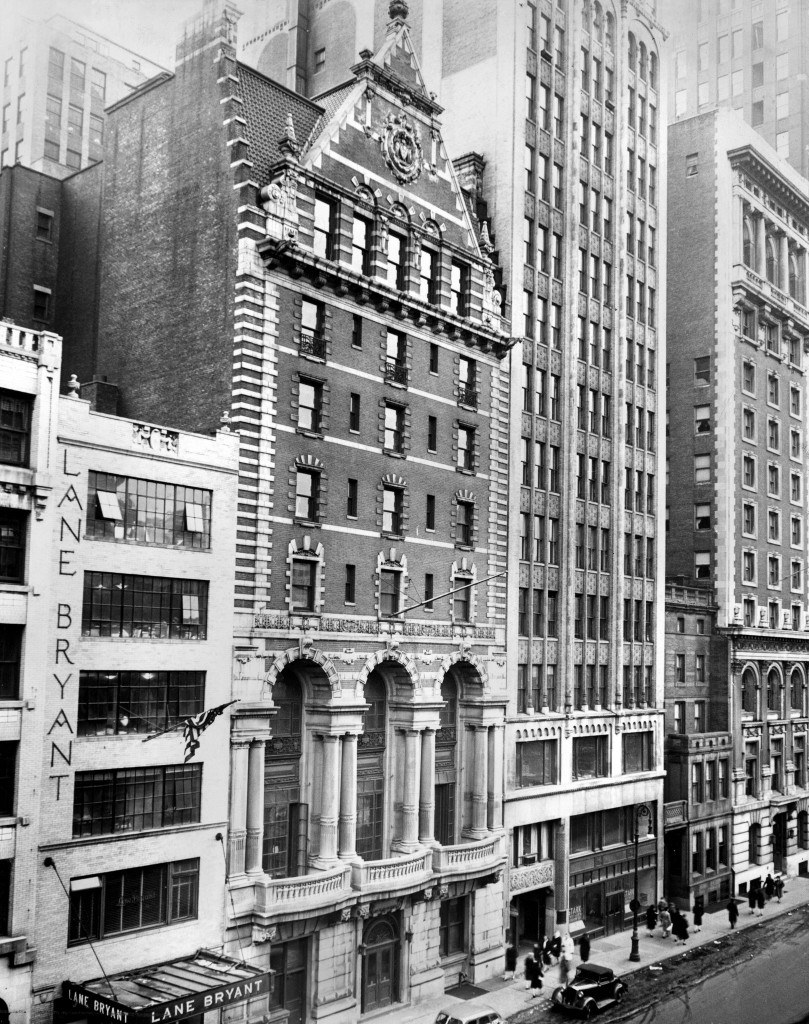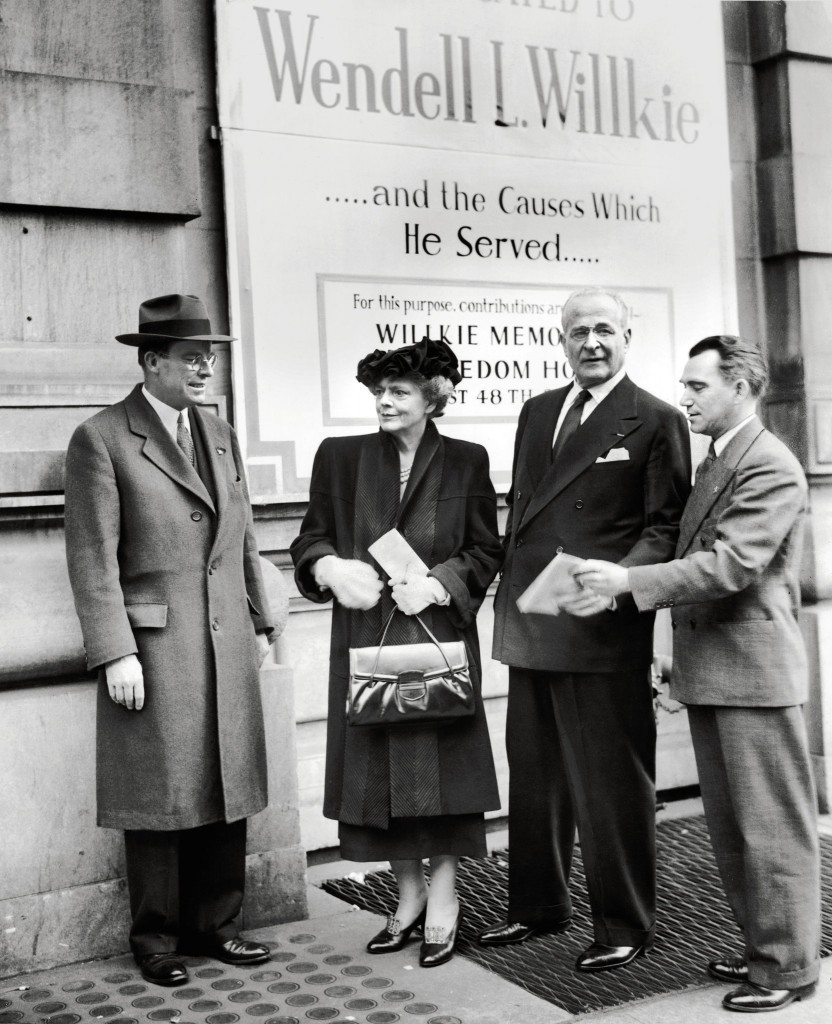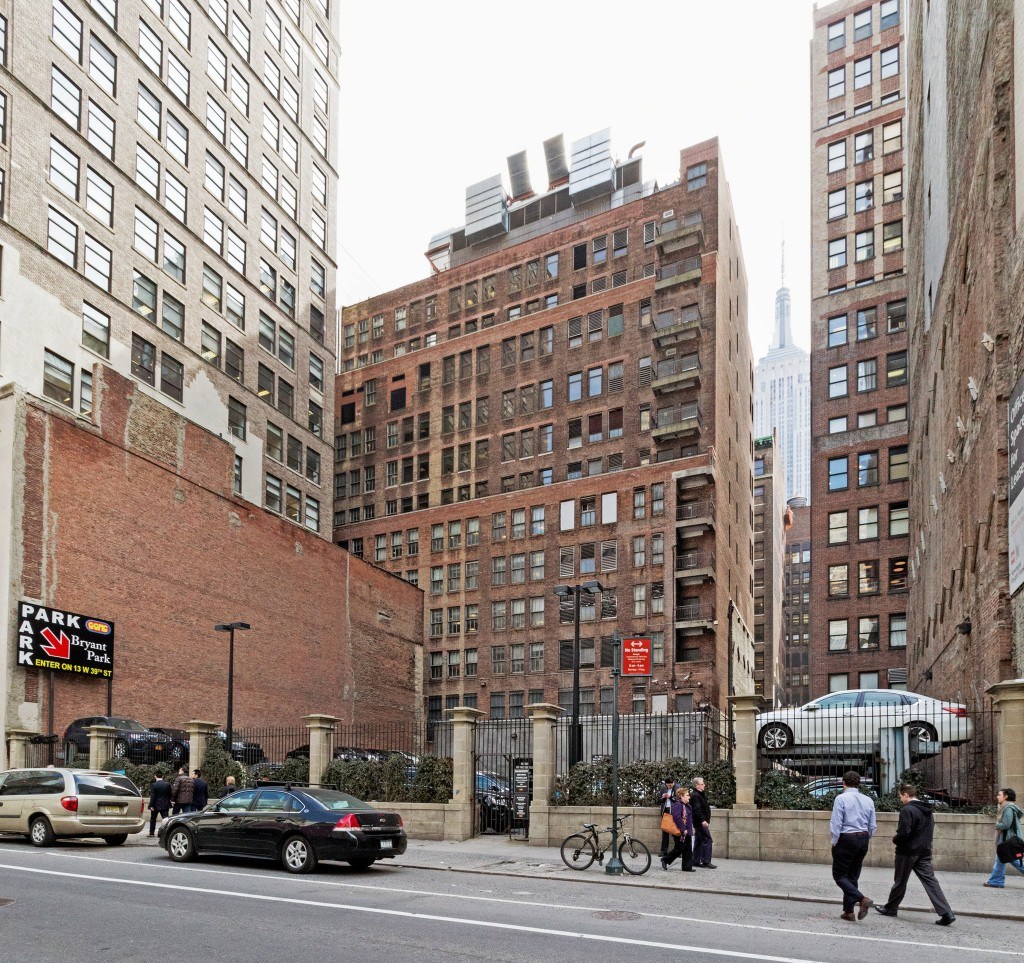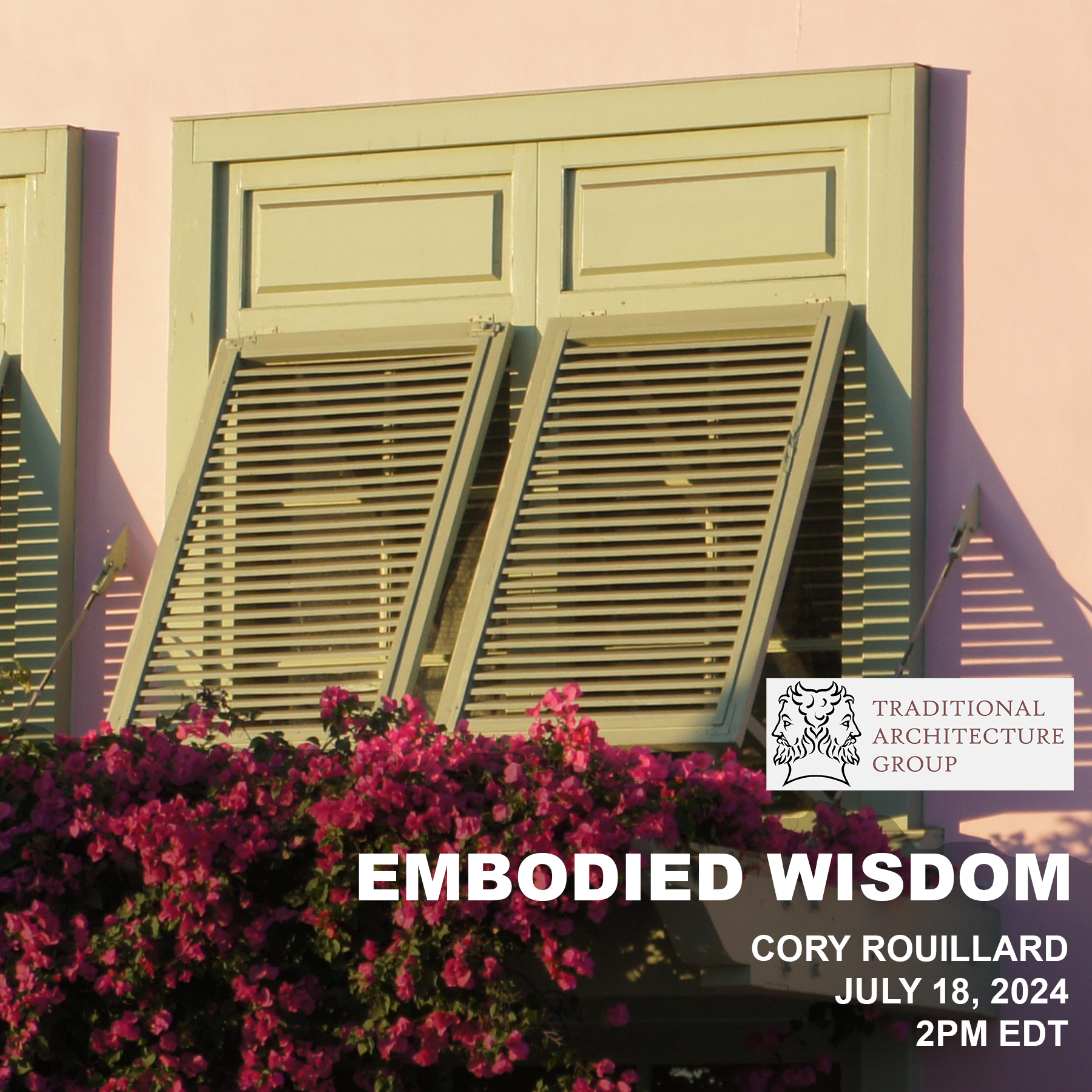Christopher Gray reports for The New York Times: Demolished Club Casts a Long Shadow

The former New York Club at 20 West 40th in 1945.
The developer HFZ Capital is proposing a new building for the empty lot at 20 West 40th Street, and the Historic Districts Council is not happy, protesting that the flat-topped 32-story tower is out of place on a street that has long had “a picturesque skyline.”
It is unstated, but the council is channeling the enduring bitterness of one of the most profound losses of the 1980s, the peaked-roof 1907 New York Club, on the very site of the proposed tower. Its demolition caught preservationists napping, and highlights a problem that, three decades later, remains: that an owner can eliminate the prospect of landmark designation for a property by simply damaging the façade.
Has anyone today even heard of the New York Club? At the turn of the century it was among the powerhouse social clubs in the city, founded in the 1840s and abbreviated by the New York Social Register simply as N, whereas other clubs were assigned more explicit abbreviations, such as Ny for the New York Yacht Club.
The New York Club was riding high in 1905, when it began acquiring land on the south side of 40th Street, opposite Bryant Park and the New York Public Library, which was then going up. The new library and the park created a civic prospect that was rewarded with the construction of half a dozen buildings of semipublic character.
The first appears to have been York & Sawyer’s super-Classical 1902 Republican Club at 58 West 40th Street, with an 11-story facade of light brick and terra cotta. Another was the becolumned Engineers Club at 32 West 40th, designed in 1905. That was the year when the New York Club arrived, buying and razing three rowhouses and retaining Henry Hardenbergh, soon to design the Plaza Hotel, for its 9-story clubhouse.
The club’s project cost nearly $1 million, and Hardenbergh gave it a façade of deep red brick spiced with bursts of terra cotta, like a red velvet cake decorated by an expert pastry chef; the stepped gables provided a definite old New York flavor. The interior was less distinctive, save for a Dutch-style tap room, but a great “morning room” ran across the entire front on the second floor. The New York Club had three floors of bedrooms, evolving into a near-hotel for its members, as opposed to the older model of purely social enterprise. It opened in 1907 with a substantial waiting list, and in 1914 there were 675 members.
The clubs of New York were hard-hit in the Depression, many folding or consolidating, and in 1933 the club had to take $220,000 for its house, which had cost around five times that in 1907. The buyer was Schenley Distributors, which bought the building in advance of the repeal of Prohibition, planning to use the grand interiors for sales and tasting rooms.
In 1945 Schenley sold to Freedom House, founded in 1941 as a consortium of organizations working for racial equality and human rights and against totalitarianism. Freedom House named its new headquarters the Willkie Memorial Building, after Wendell Willkie, the Republican who ran against Franklin Roosevelt in 1940 but then worked in F.D.R.’s administration. The National Association for the Advancement of Colored People was a tenant, and it was from the Willkie Building in 1946 that Thurgood Marshall, the N.A.A.C.P.’s special counsel, compared the brutal suppression of Negro protests in Tennessee to the actions of “German storm troopers.” Marshall later served on the Supreme Court.
At the 1945 dedication of the building to Wendell Willkie, were, from left, Charles Evans Hughes Jr., Ethel Barrymore, Herbert Bayard Swope and George Field.
In 1985, while the Republic National Bank, at Fifth Avenue and 42nd Street, was in the process of acquiring the old New York Club for expansion, workmen started ripping off the decorative ornament, working day and night. Caroline K. Simon, the general counsel of Freedom House, said the bank was doing the work, and that it was necessitated by safety concerns. But Charles M. Smith Jr., the city’s building commissioner, said the work was unwarranted. After the bank took title, the building was demolished.
In 1986 the preservationist Roberta Gratz decried the demolition in an article in Newsday, saying the Landmarks Preservation Commission had identified the building “as having high priority for designation.” But in a 1984 survey, the commission had listed the building as only “of interest”; higher categories were “of significance” and “of outstanding significance.”
In any event, the bank had cause to believe the club might be designated. Pre-emptive demolition is still considered a major threat by preservationist groups, who say that owners should approach the commission before tearing down a historic building. That is quite a distance from the realities of New York real estate, where developers often keep their plans as quiet as they can, having paid millions for a building counting on a free hand.
The site today, for which a 32-story tower is planned.





